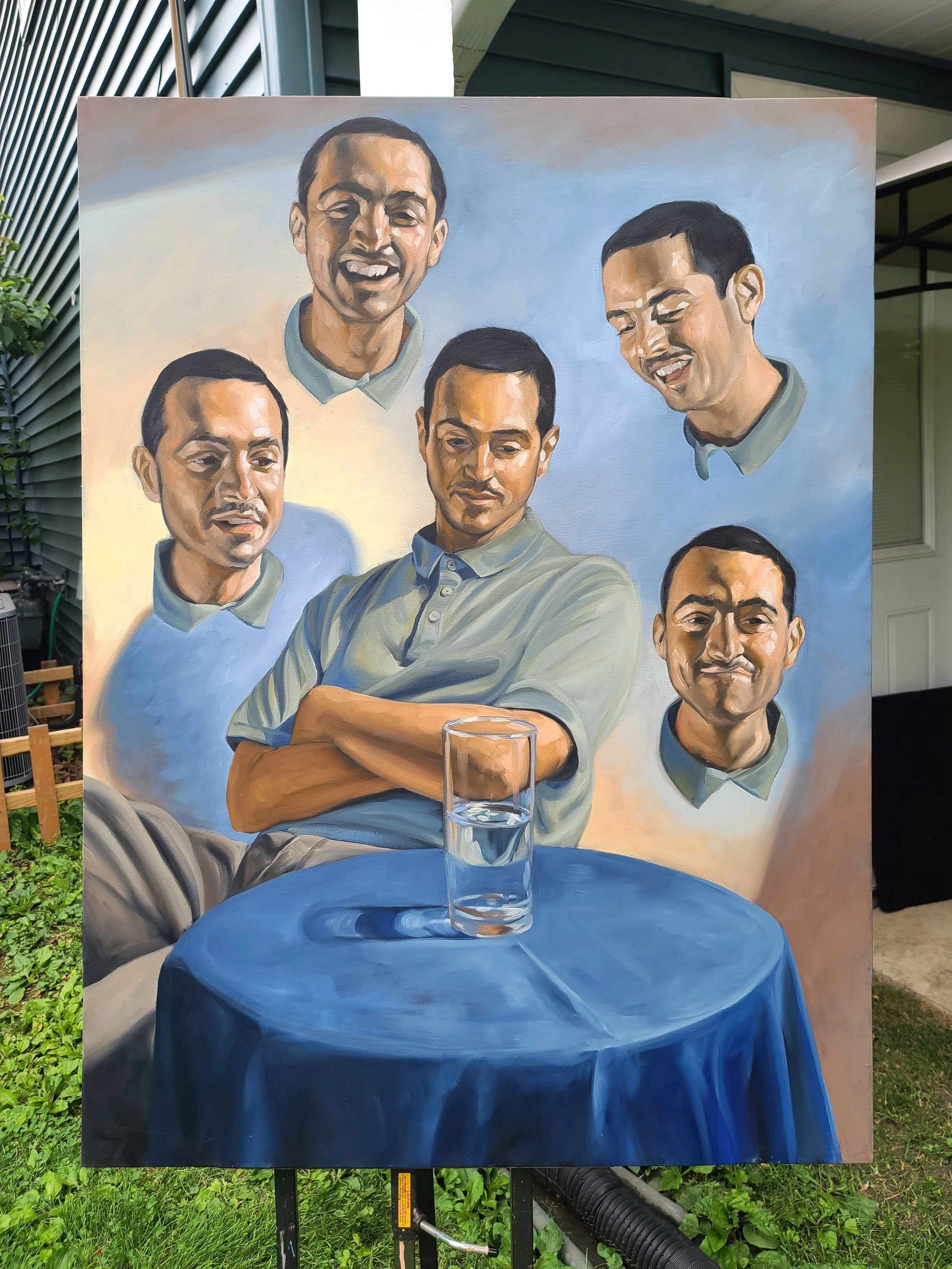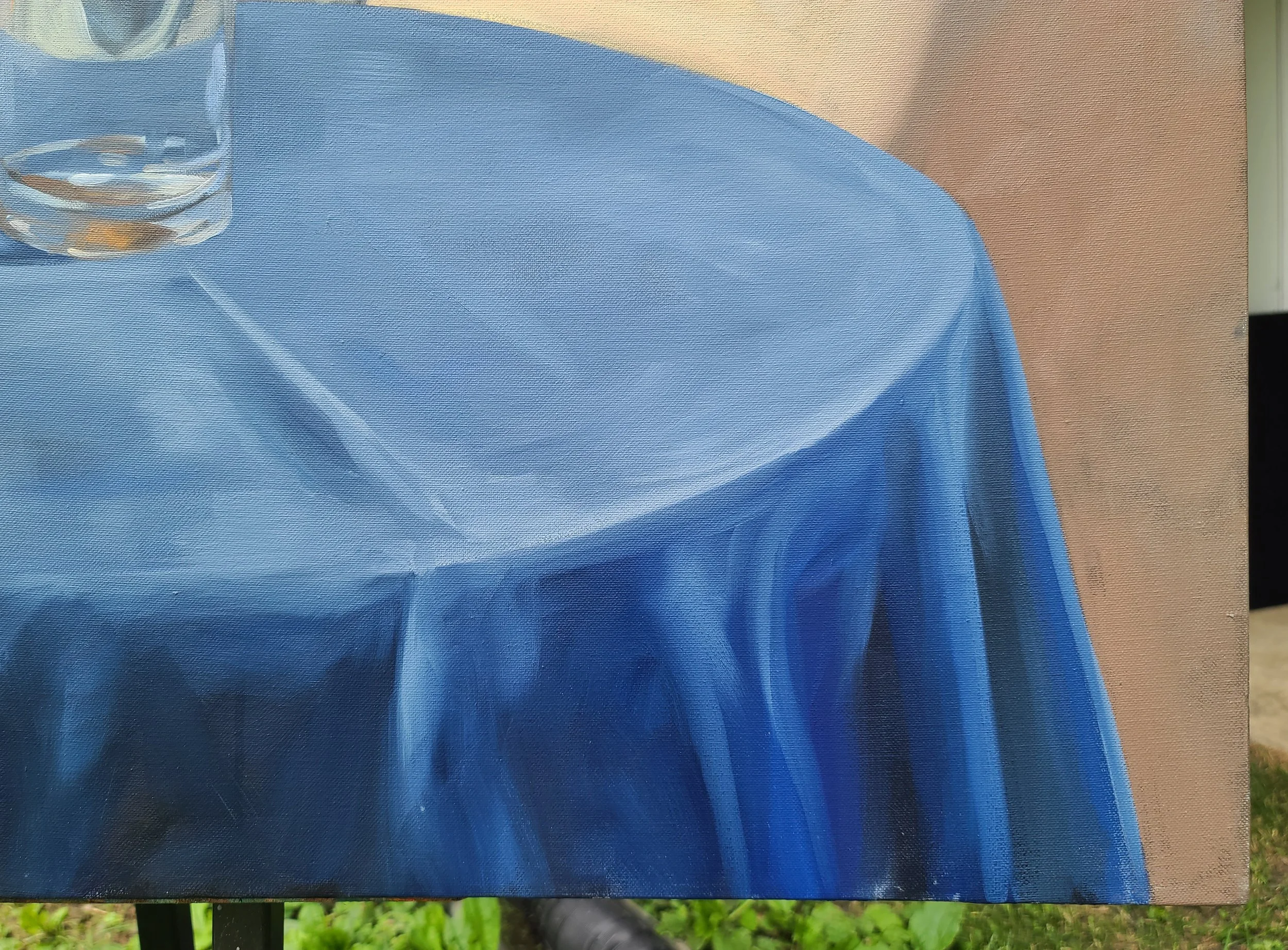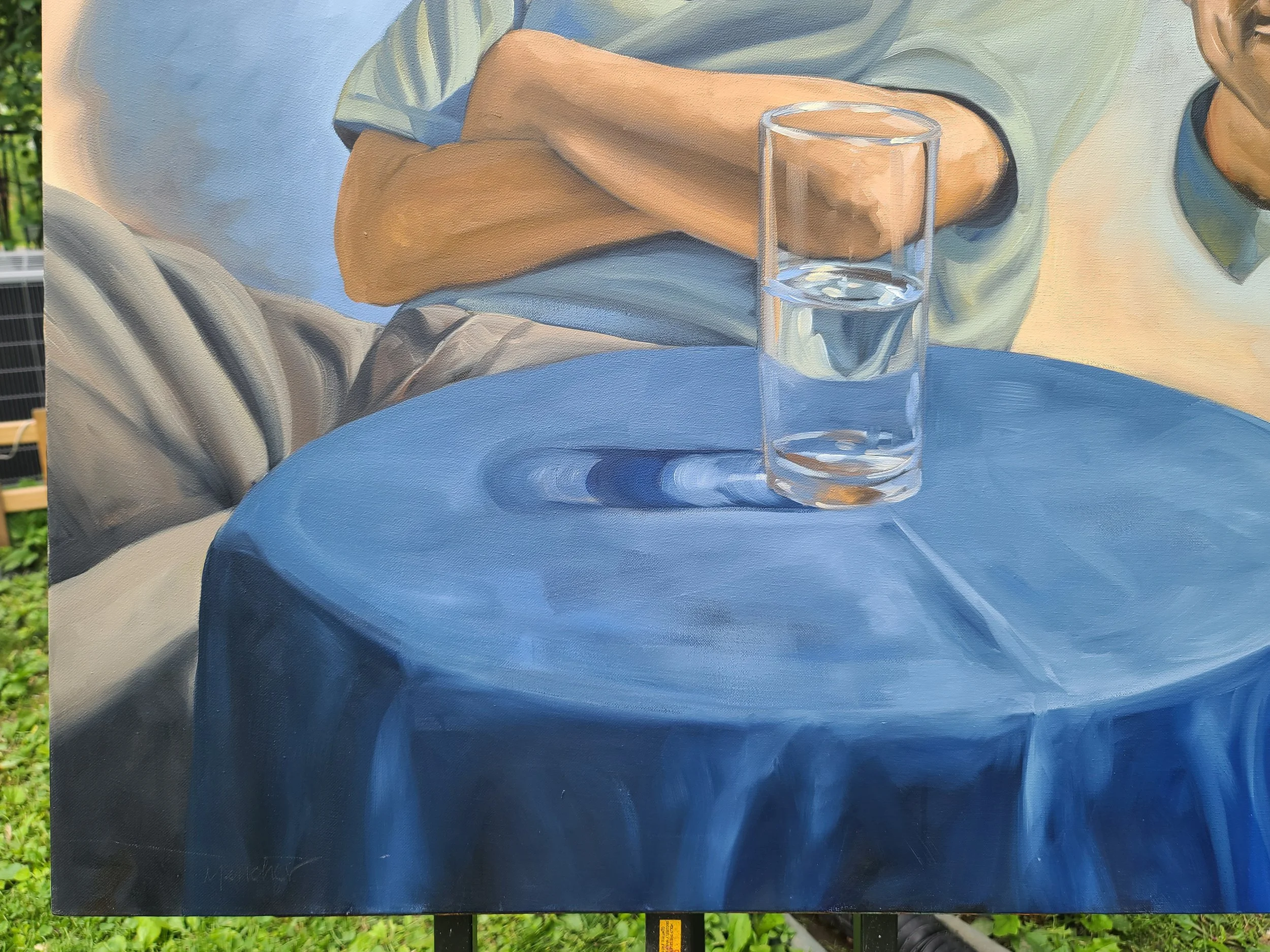 Image 1 of 9
Image 1 of 9

 Image 2 of 9
Image 2 of 9

 Image 3 of 9
Image 3 of 9

 Image 4 of 9
Image 4 of 9

 Image 5 of 9
Image 5 of 9

 Image 6 of 9
Image 6 of 9

 Image 7 of 9
Image 7 of 9

 Image 8 of 9
Image 8 of 9

 Image 9 of 9
Image 9 of 9










1994, Charade, 8x10 inches, reduction woodcut, (artist print) by Kenney Mencher
FREE SHIPPING Shipping takes 3-4 Weeks
This ships from Round Lake Beach, Illinois. A suburb outside of Chicago.
I use UPS and sometimes US Post.
This piece is called Charade and I made it in 1993 as a reduction woodcut. It’s about 8x10 inches, printed by hand, and this one is marked as an artist's proof. I based the image on a scene from the movie Charade with Cary Grant and Audrey Hepburn. I couldn’t get the moment out of my head—something about the way the shadows and figures lined up was so striking, it stuck with me. I sketched it quickly from memory and then turned it into this print.
This print is part of my Fresh Finds project. I’ve been going through my personal archive and pulling out early work that most people have never seen. These prints represent the beginning of my career and the foundation of my style. Sharing them now gives collectors a chance to own a piece of that history—my history. These are one-of-a-kind or small-edition prints that I’ve held onto for years, and I thought it was time to let them be part of someone else’s collection.
I used a reduction woodcut technique here, which means I carved and printed the same block in stages—starting with the lightest color, printing it, carving more away, then printing the next darkest, and so on. You lose part of the block with each step, so once you’ve finished, there’s no going back. It forces you to commit and plan ahead, which I really enjoy. This one is printed in yellow and black ink on paper.
The scene shows two silhouetted figures—one near the foreground and one further back in a brightly lit doorway. The shadows stretch out dramatically, almost like stage lighting. The space is made of vertical and diagonal lines that suggest floorboards, curtains, or maybe even shadows cast by blinds. It’s abstracted but rooted in realism. The anatomy of the figures is simplified to silhouettes, but the sense of posture and movement is still there.
Compositionally, it’s asymmetrical, but carefully balanced. The strong vertical lines on either side frame the glowing rectangular doorway, which becomes the focal point. The perspective lines on the floor pull your eye back into the space and guide you straight to the figure in the light. The contrast between the yellow and black heightens the drama and gives it a noir, cinematic feel.
There aren’t any overt symbols, but the use of shadow, light, and silhouette gives it a mysterious tone. It could be read as a metaphor for memory, distance, or even emotional disconnect. Those themes show up a lot in my work, especially in pieces from this period.
This print connects to my ongoing interest in cinema, especially mid-20th-century film. I’ve always been drawn to the visual storytelling in movies, and this is a good example of that influence. The bold contrast and reduced detail also tie into the Bay Area Figurative tradition—artists like Elmer Bischoff and Richard Diebenkorn, who found meaning in simplified forms and moody spaces.
Details:
Title: Charade
Year: 1993
Medium: Reduction woodcut print
Dimensions: 8 x 10 inches
Hand-pulled artist’s proof
Unframed
From the Fresh Finds archive release
Signed on the front
FREE SHIPPING Shipping takes 3-4 Weeks
This ships from Round Lake Beach, Illinois. A suburb outside of Chicago.
I use UPS and sometimes US Post.
This piece is called Charade and I made it in 1993 as a reduction woodcut. It’s about 8x10 inches, printed by hand, and this one is marked as an artist's proof. I based the image on a scene from the movie Charade with Cary Grant and Audrey Hepburn. I couldn’t get the moment out of my head—something about the way the shadows and figures lined up was so striking, it stuck with me. I sketched it quickly from memory and then turned it into this print.
This print is part of my Fresh Finds project. I’ve been going through my personal archive and pulling out early work that most people have never seen. These prints represent the beginning of my career and the foundation of my style. Sharing them now gives collectors a chance to own a piece of that history—my history. These are one-of-a-kind or small-edition prints that I’ve held onto for years, and I thought it was time to let them be part of someone else’s collection.
I used a reduction woodcut technique here, which means I carved and printed the same block in stages—starting with the lightest color, printing it, carving more away, then printing the next darkest, and so on. You lose part of the block with each step, so once you’ve finished, there’s no going back. It forces you to commit and plan ahead, which I really enjoy. This one is printed in yellow and black ink on paper.
The scene shows two silhouetted figures—one near the foreground and one further back in a brightly lit doorway. The shadows stretch out dramatically, almost like stage lighting. The space is made of vertical and diagonal lines that suggest floorboards, curtains, or maybe even shadows cast by blinds. It’s abstracted but rooted in realism. The anatomy of the figures is simplified to silhouettes, but the sense of posture and movement is still there.
Compositionally, it’s asymmetrical, but carefully balanced. The strong vertical lines on either side frame the glowing rectangular doorway, which becomes the focal point. The perspective lines on the floor pull your eye back into the space and guide you straight to the figure in the light. The contrast between the yellow and black heightens the drama and gives it a noir, cinematic feel.
There aren’t any overt symbols, but the use of shadow, light, and silhouette gives it a mysterious tone. It could be read as a metaphor for memory, distance, or even emotional disconnect. Those themes show up a lot in my work, especially in pieces from this period.
This print connects to my ongoing interest in cinema, especially mid-20th-century film. I’ve always been drawn to the visual storytelling in movies, and this is a good example of that influence. The bold contrast and reduced detail also tie into the Bay Area Figurative tradition—artists like Elmer Bischoff and Richard Diebenkorn, who found meaning in simplified forms and moody spaces.
Details:
Title: Charade
Year: 1993
Medium: Reduction woodcut print
Dimensions: 8 x 10 inches
Hand-pulled artist’s proof
Unframed
From the Fresh Finds archive release
Signed on the front
















































